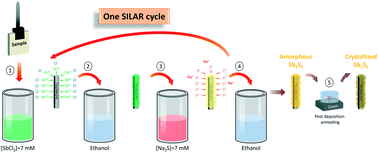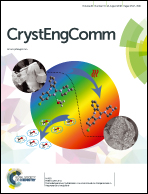Synthesis and properties of ZnO/TiO2/Sb2S3 core–shell nanowire heterostructures using the SILAR technique
Abstract
The development of the successive ionic layer adsorption and reaction (SILAR) technique is of high interest for the integration of a semiconducting layer onto high aspect ratio nanoscale structures. We show the deposition of an Sb2S3 shell by SILAR on top of ZnO/TiO2 core–shell nanowire heterostructures, using antimony chloride and sodium sulfide as cationic and anionic precursors, respectively. The conformal anatase-TiO2 shell deposited by atomic layer deposition acts as a protective layer to chemically stabilize these heterostructures with a type II band alignment in the cationic precursor solution. The resulting Sb2S3 shell is composed of uniformly distributed Sb2S3 clusters crystallized at a relatively low temperature of 250 °C from the bottom to the top of ZnO nanowires. It is, further, of high purity, where only a very minor senarmontite-Sb2O3 phase is detected by Raman spectroscopy, and exhibits a relevant band gap energy of 1.74 eV derived from a Tauc plot in the framework of the double pass analysis. These findings reveal the high potential of the SILAR technique to form ZnO core–shell nanowire heterostructures with high uniformity at moderate temperature as well as its advantages over the most widely used chemical bath deposition technique.



 Please wait while we load your content...
Please wait while we load your content...